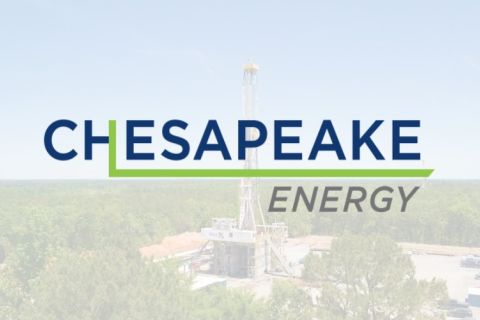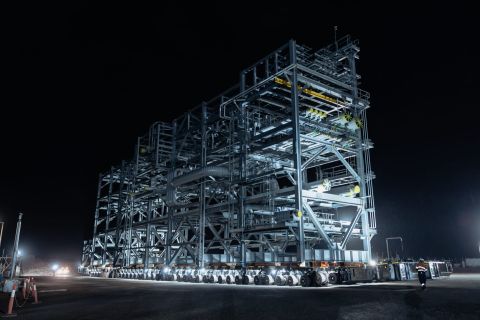The Sho-Vel-Tum field in southern Oklahoma was discovered in 1905, leading to a rush of oil finds in the state that culminated in peak production in 1927. Now a brand new play – the South Central Oklahoma Oil Province (SCOOP) – is tapping a shale below the Sho-Vel-Tum formations that could add to the state’s booming unconventional plays, leading to a big increase in oil and condensate production.
The Oklahoma Corporation Commission reported Oklahoma’s total liquids production hit a modern low of 58.05 MMbbl in 2010 before jumping up to 76.8 MMbbl in 2011. In 2009, only 163 wells in Oklahoma were producing more than 100 b/d, according to the Energy Information Administration.
The shift in interest to the oil-liquids plays in Oklahoma can be seen in the rig count. On Nov. 25, 2009, Baker Hughes’ rig count in the state was 86. By Nov. 30, 2012, the number of rigs had more than doubled to 188 units.
Like the Bakken shale boosted North Dakota’s output from less than 100,000 b/d to more than 700,000 b/d over a relatively short period of time, the Cana Woodford, Woodford Arkoma, and Woodford Ardmore shales; the Mississippi Lime; and the Granite Wash, Marmaton, Cleveland, and Tonkawa tight sands hold the promise for the same boost in production in Oklahoma.

Cimarex Energy is drilling infill wells in the liquids-rich core of the Cana Woodford in northwest Oklahoma. The company has four to seven operated rigs drilling off two well pads with nine wells per section. (Photo courtesy of Cimarex Energy)
Newest play: SCOOP
Continental Resources has started promoting a play it named SCOOP. The company has kept the play in the Woodford Ardmore shale under the radar while it signs up leases. It also has been drilling wells in the play, drilling or participating in 35 wells to date. Continental has 197,340 acres in Stephens, Grady, McClain, Garvin, and Carter counties.
During 2012 Continental completed three wells in the oil fairway. The Simms 1-32H flowed 702 boe/d (80% liquids), the Healey 1-12H came in at 670 boe/d (86%), and the Mills 1-21H produced 626 boe/d (81%). The condensate fairway produces higher volumes with generally between 55% and 60% liquids.
Five wells were completed in the condensate fairway: Poteet 1-17H with 1,771 boe/d (55%); Vesta Marie 1-29H with 1,530 boe/d (61%); Carson 1-2H with 1,524 boe/d (57%); Auld 1-10H with 1,334 boe/d (58%); and Dawkins 1-20H with 808 boe/d (58%).
In its 3Q 2012 overview, Continental said, “The SCOOP and Northwest Cana plays were previously combined by us and referred to as the Anadarko Woodford play.”
The company reported a 55% increase in average daily production over the 3Q 2011. “The increase in 2012 production was primarily driven by an increase in production from our properties in the North Dakota Bakken field and the Northwest Cana and SCOOP plays in Oklahoma due to the continued success of our drilling programs in those areas,” the overview stated. “Production from our properties in the emerging SCOOP play in south-central Oklahoma averaged 5,183 boe/d for the 3Q 2012, a 327% increase over the 3Q 2011.”
The company said that the Woodford shale is up to 122 m (400 ft) thick with Upper Woodford and Lower Woodford sections. The Lower Woodford has six times the reservoir volume of the Cana field and is oil-prone and liquids-rich. Continental participated in 12 gross (5 net) wells in SCOOP and Northwest Cana during 3Q 2012. The company is currently operating six drilling rigs in SCOOP and none in Northwest Cana.
Granite Wash attracts attention
The unconventional plays in Oklahoma have been attractive for small to mid-size companies. The success caught the attention of the large independents. In January 2012, Apache Corp. agreed to purchase Cordillera Energy Partners III LLC for US $2.85 billion in cash and stock.
The acquisition more than doubled Apache’s holdings in the Anadarko basin. Cordillera held 254,000 net acres in the Granite Wash, Tonkawa, Cleveland, and Marmaton areas. One of the more prolific wells drilled by Cordillera was the Skyy 2-33HC. The well can recover NGL at a 6:1 conversion ratio. The initial production rate was 4,546 boe/d. Also, the Bradshaw 1-11HB produced 1,254 bbl of oil and 847,000 cf of gas in a 24-hour period.
Chesapeake Energy owns approximately 190,000 net acres of leasehold in the Granite Wash play and 30,000 net acres in the Hogshooter play in western Oklahoma and the Texas Panhandle. About 28% of total Granite Wash and Hogshooter production during the quarter was oil, 22% was NGL, and 50% was natural gas. The company is currently operating 10 rigs in the two plays.
Two notable wells completed by Chesapeake in the Granite Wash during the quarter were the Clarence B 21-11-26 1H in Beckham County, Okla., with about 750 b/d of oil, 490 b/d of NGL, and 6.4 MMcf/d of natural gas and the Ervin 17-11-17 2H in Washita County, Okla., with 460 b/d of oil, 495 b/d of NGL, and 5.0 MMcf/d of natural gas.
Cleveland, Tonkawa tight sands
The Cleveland, Tonkawa, Marmaton, and Granite Wash tight sands extend from western Oklahoma into the Texas Panhandle. Chesapeake owns approximately 520,000 net acres of leasehold in the Cleveland play and 285,000 net acres in the Tonkawa play in western Oklahoma and the Texas Panhandle.
One notable well completed by Chesapeake in the Cleveland sand during the 3Q 2012 was the Larry Imke 9-19-25 1H in Ellis County, which achieved a peak rate of approximately 1,035 boe/d. In the Tonkawa sand, the best well reported was the Fariss 2-16-20 1H in Dewey County, Okla., with a peak rate of nearly 775 boe/d.
Liquids boost Mississippi Lime play
The Mississippi Lime play in northern Oklahoma and southern Kansas continued to attract new players, including at least one major. Shell Oil bought into properties on the Kansas side of the play.
In Oklahoma, Range Resources Corp. completed 18 horizontal wells in 2012 with four of these wells showing 24-hour initial production rates to sales of more than 1,000 boe/d (83% liquids). The company planned a five-rig drilling program for 2013 in the horizontal Mississippian play along the Nemaha Ridge in Oklahoma and Kansas.
Jeff Ventura, Range’s president and CEO, said in the company’s 3Q 2012 report, “Range believes its location along the Nemaha Ridge largely accounts for our positive results. We believe our 2012 results with four wells having initial rates over 1,000 boe/d confirm that we have identified a core area of the play. Given our continued positive developments in the play, we have accelerated the start date of our five-rig program, originally slated to begin in the first quarter of 2013.”
The company has reaffirmed its estimated 600 MMboe estimated ultimate recovery (EUR) per well for its 2012 program wells with greater than 1,067-m (3,500 ft) laterals. For its acreage position, Range projects that the EUR per well will approximate equal parts oil, NGL, and natural gas.
Based on its current plans, Range expects to run a five-rig program in 2013, increasing to 10 rigs in 2014 and 15 rigs in 2015. The 2013 program is expected to drill 68 wells, consisting of 51 producing wells and 17 water disposal wells.
With about 2 million net acres in its leasehold in the Mississippian play, Chesapeake boosted its production 211% year-on-year for the 3Q 2012. As of Sept. 30, 2012, Chesapeake had 227 producing wells in the Mississippi Lime play, which included 73 wells that reached first production in the 3Q 2012 compared to 49 in the 2Q 2012 and 11 in the 3Q 2011. The company also had approximately 55 wells drilled but not yet producing in various stages of completion and/or waiting on pipeline connection. Chesapeake is currently operating nine rigs in the Mississippi Lime play. Chesapeake continues to pursue a joint venture and/or sale of a portion of its Mississippi Lime acreage.
MineralMarketing.Com ? is headquartered in Woods County, Okla., in the core area of the Mississippian play. The company works primarily with mineral owners to provide a national market for their mineral leases and sales. The bulk of the company’s client base are farm and ranch families that have owned the assets for 60 years to 80 years.
“Exploration and production companies are targeting areas with better well performance. It is a narrower target than two years ago,” said Shane Terrel, CEO, Min? eralMarketing.Com? . “We take listings on assets and market them to prospective buyers.”
Leasing activity becomes more focused as the play develops. There are areas nobody wants to lease that would have easily leased a year ago, he continued.
“We’re seeing something new in southern extensions in Logan, Payne, and Noble counties. Operators are not just drilling the Mississippian Line but are shooting at targets at different depths,” he told E&P.
When reputable companies enter the play it tends to add credibility. Devon Energy is involved in the play and “Devon’s presence alone adds credibility to the play. It is the same thing that happened when Shell moved into the play in Kansas north of the Oklahoma border,” he said.
SandRidge Energy is the obvious front-runner in the Mississippian play, he added.
Liquids-rich Cana Woodford fairway
Cimarex Energy is active in the Cana Woodford shale in Caddo, Grady, Canadian, Custer, Blaine, Dewey, and Kingfisher counties. The company has about 120,000 net acres in the play with 75,000 acres in the liquids-rich area and 45,000 acres in the gas-rich area.
During a Dec. 4, 2012 presentation, Cimarex said that it currently is drilling infill wells in the liquids-rich core. The company has four to seven operated rigs. It is drilling off two well pads with nine wells per section.
Cimarex began hydraulic fracturing on the infill wells in May 2012 and expects to complete the last frac job in the 1Q 2013 or the 2Q 2013. An estimated 115 infill wells were drilled in 2012 (59 operated and 56 nonoperated). The company is focusing on drilling program efficiencies, including multiwell pads, bi-fuel for rigs, water management, proximity savings, and rig competition.
Flares for cost-effective VOC control must meet new standards
Flares that meet new NESHAP and NSPS requirements also can be engineered to reduce potential wildfire risk in drought areas such as the Woodford shale area.
By Caleb Hurd, Zeeco Inc.
As any Oklahoma producer knows, the state’s weather conditions are simply unpredictable. High wind and extreme drought conditions are a major concern in the Woodford play. Leading operating companies are making the move to enclosed flare systems to reduce the potential wildfire risk as well as to meet new US Environmental Protection Agency (EPA) oil and gas production regulations.
On April 17, 2012, the EPA, as part of the Clean Air Act requirement, released the first federal air standards for oil and gas production, transmission, and storage facilities. The National Emissions Standards for Hazardous Air Pollutants (NESHAP) 40 CFR 63 Subpart HH/HHH has been revised, affecting existing, new, and modified facilities. In addition, the newly developed New Source Performance Standards (NSPS) 40 CFR 60 Subpart OOOO (Quad O) applies to new and modified affected facilities, and significant staff increases are anticipated as a result of these broad-reaching emissions reduction rulings.
As of Oct. 15, 2012, NSPS Quad O requires gases that would otherwise be vented during periods of flowback to be routed to a completion control device (CCD) instead. The CCD must achieve a minimum of 95% volatile organic compound (VOC) reduction. A properly designed and engineered flare will achieve greater than 98% VOC reduction.
In the Woodford shale and urban locations, enclosed flares (sometimes incorrectly called “incinerators” or “combustors”) are often preferred as a “good neighbor” investment. Enclosed flares can be designed for multiple streams within the same unit to save on overall capital costs.
In addition to the NESHAP and NSPS rules for oil and gas production sites, new flare assist media regulations are forthcoming, targeting steam-assist and air-assist flares. The new EPA regulations will target combustion zone net heating value to reduce over steaming or over airing the flares. The amount of steam and air (via a low-pressure air blower) will have to be controlled in relationship to the amount of hydrocarbon being sent to the flare.
When evaluating an engineered flare, operators should seek a robust design that includes temperature-resistant construction for heat-affected components to ensure long-term life expectancy of the flare tip and pilot. Use of investment castings for the critical components in the heat-affected zones minimizes the potential for field failure. Requiring a continuously monitored pilot that meets or exceeds American Petroleum Institute Standard 537 design criteria for performance under high wind and rain conditions means less operations and maintenance nuisance issues in the field and ensures environmental performance.
Recommended Reading
The Secret to Record US Oil Output? Drilling Efficiencies—EIA
2024-03-06 - Advances in horizontal drilling and fracking technologies are yielding more efficient oil wells in the U.S. even as the rig count plummets, the Energy Information Administration reported.
NextDecade Targets Second Half of 2024 for Phase 2 FID at Rio Grande LNG
2024-03-13 - NextDecade updated its progress on Phase 1 of the Rio Grande LNG facility and said it is targeting a final investment decision on two additional trains in the second half of 2024.
DUG GAS+: Chesapeake in Drill-but-don’t-turn-on Mode
2024-03-28 - COO Josh Viets said Chesapeake is cutting costs and ready to take advantage once gas prices rebound.
CERAWeek: Tecpetrol CEO Touts Argentina Conventional, Unconventional Potential
2024-03-28 - Tecpetrol CEO Ricardo Markous touted Argentina’s conventional and unconventional potential saying the country’s oil production would nearly double by 2030 while LNG exports would likely evolve over three phases.
Woodside’s Pluto Train 2 Nears 2026 Start Up with Modules Delivery
2024-02-21 - First 3 of 51 modules have arrived on site in Western Australia for the onshore LNG project that will receive gas from the offshore Scarborough project.





